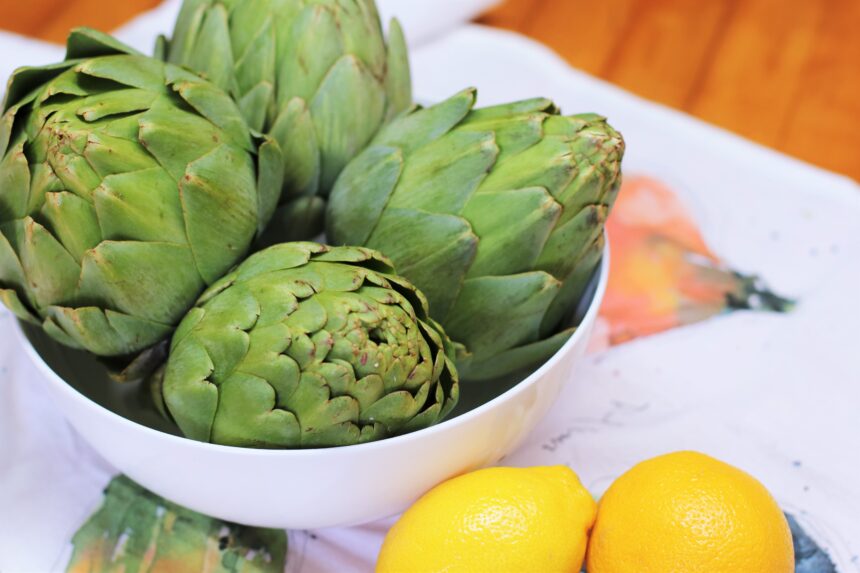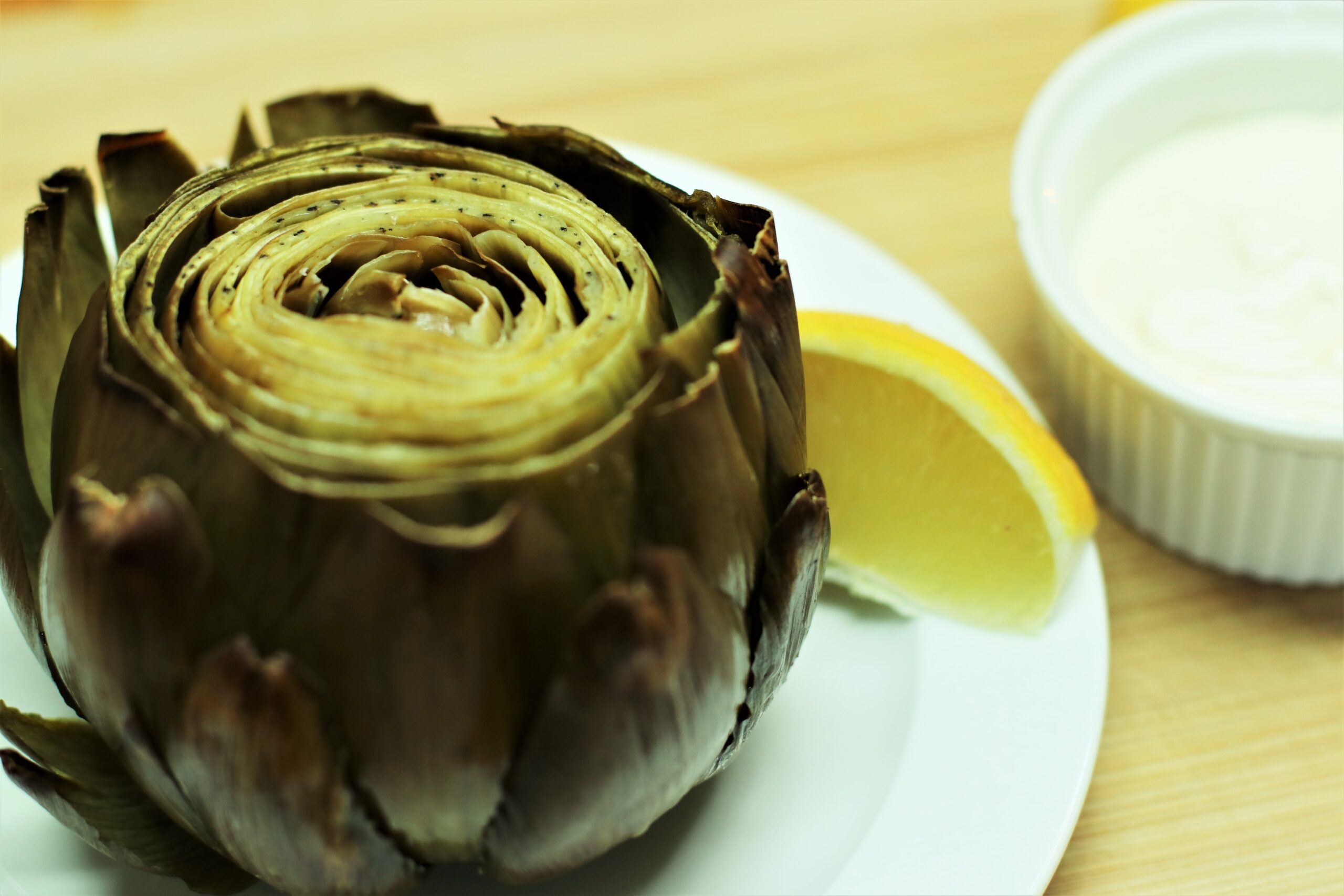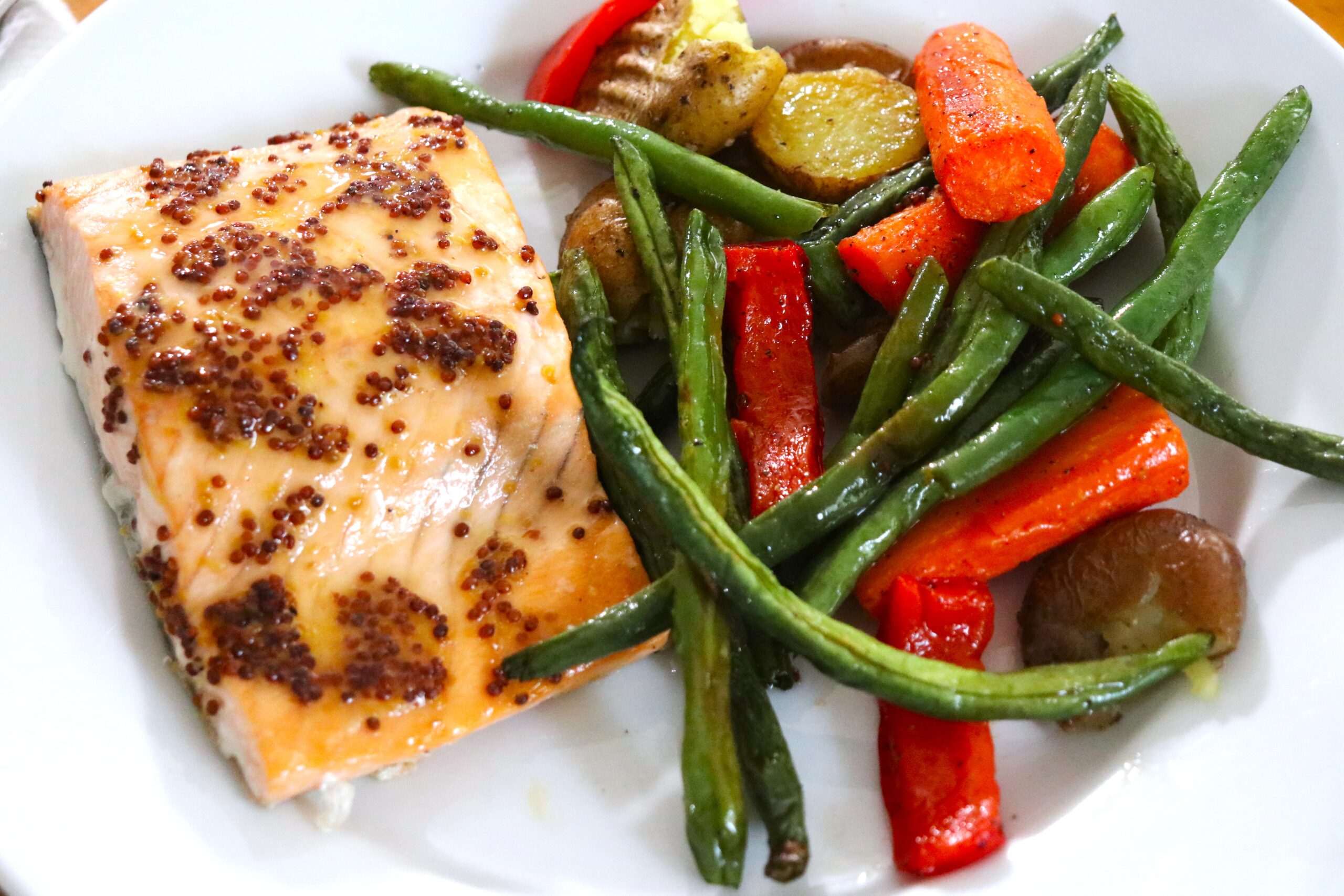Thankfully, my mother made sure we were among the initiated. We had whole steamed artichokes every so often growing up, and I really, really liked them. I also really liked the melted butter served with them. (Who wouldn’t?) I learned to pluck the leaves from the artichoke and then scrape the meat off the tough leaves with my teeth. I also learned how to use a spoon to scoop out the hairy choke revealing the gray-green heart, then cut the heart into quarters, and bathe every surface of those bites in the butter before popping in my mouth. Who cares if you get butter all over your chin? That’s why we have napkins. To this day, a fresh artichoke in season remains one of best things I’ve ever eaten.

It was only later on in college and beyond that I realized lots of people–even some of the more sophisticated types–had no idea what to do when confronted with an artichoke. Not MY someday offspring, I vowed. When my oldest daughter was still elementary-age, I often employed the old trick of putting a fancy-looking fruit/vegetable tray with a tasty dip on the kitchen table after school and insisting we had no other food. Ours was the sort of neighborhood where the kids played and roamed in packs. One spring I introduced whole artichokes with melted butter to the after-school snack rotation. Two weeks later every kid in the neighborhood over the age of 7 knew how to eat an artichoke. They got so grabby and demanding about them–”NO. I am certainly not making one for each of you, I cooked three, y’all have to share”–that I declared artichoke season over early that year. Artichokes are expensive! Thank heavens they didn’t know when artichoke season really ended anyway, bless their greedy little hearts.
Nearly 100% of the North American artichoke crop is grown in California. Florida is working hard toward commercially-viable artichoke cultivation, but it’s early days yet. Currently prime artichoke season in the US is March through May. So it’s artichoke season right now! You know it’s arrived when all of a sudden the artichokes are super fat, green, and gorgeous in the grocery store, plus the price is lower than at any other time of the year.
Until a couple of years ago, I always steamed artichokes. But when I learned to roast vegetables, I wondered whether artichokes might roast well, too. The answer is yes! (I now routinely roast even canned artichoke hearts and bottoms to use in recipes.) Roasting removes some of the water content, and concentrates the flavors. The most reliable roasting recipe for whole artichokes I’ve found is from Chef John Mitzewich from Allrecipes. Plus, it’s easy! (Thanks, Chef John!) Naturally, I’ve messed with the recipe some, but his method is pretty well intact. I’ve also added a recipe for a quick stir-together sauce.
And as always, enjoy!

Roasted Artichokes with Creamy Lemon Dipping Sauce
Ingredients
- 3 lemons, divided
- 4 large, fresh, artichokes
- 1/4 cup or so of melted butter
- salt and pepper to taste
- 4 large sheets heavy-duty aluminum foil, at least 12”x12”
- 1/3 cup sour cream
- 2/3 cup mayonnaise
- 1 t. Dijon mustard
Instructions
- Preheat oven to 425°. Zest one of the lemons into a bowl and set aside to save for the sacuce. Cut all of the lemons in half, and squeeze all but one half into another bowl. Save the last half lemon for the sauce.
- Cut the top 1 ½ inches off each artichoke, and also cut the stems completely off so that the artichokes will sit flat. Immediately brush the cut surfaces with some of the lemon juice to retard browning.
- Pry the leaves apart a little with your fingers. Put an artichoke, stem side down, in the center of a piece of foil. Sprinkle with extra lemon juice, drizzle with melted butter, and season with salt and pepper. Carefully draw the foil up on all sides and completely seal the top by pleating, smoothing, and then twisting the foil. The goal is to encase each artichoke so completely that it’s airtight. Repeat with the remaining artichokes.
- Set the artichokes snugly together in a casserole dish, stem side down. Bake for 1 hour 20 minutes. Trust the process, and don’t open the foil before the time has elapsed. Allow them to cool for a few minutes once they’re done, and take care not to get a steam burn when you do unwrap them.
- For the sauce, whisk together the sour cream, mayo, Dijon mustard, plus the zest and juice of the remaining half lemon. Add a dash each of salt and pepper. Taste, and adjust seasoning if needed. Serve with the roasted artichokes.


















0 Comments